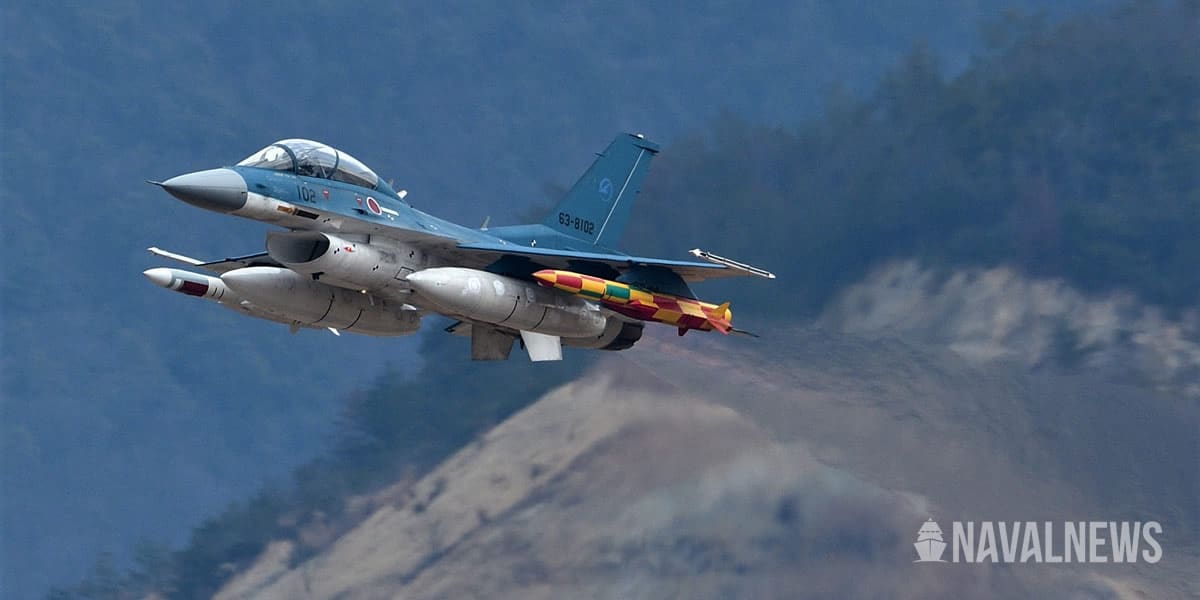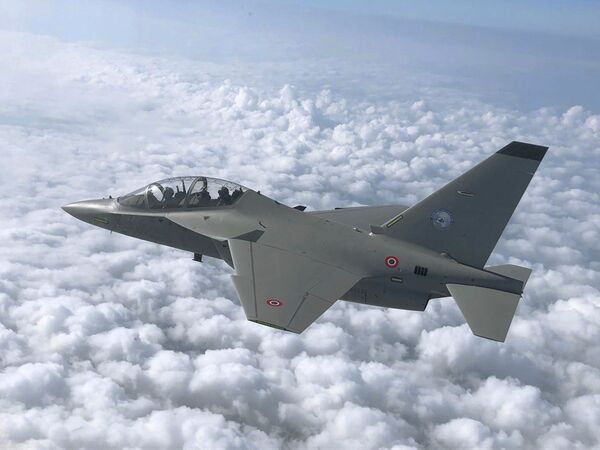This is a good acquisition by the Japanese and makes complete sense integrating the JSM with the F-15J. As for the whinging from Beijing, they've only got themselves to blame because of their aggressive actions in the SCS, against Japanese islands, and elsewhere.Japan to begin receiving Joint Strike Missiles from April 2021
Japan to begin receiving Joint Strike Missiles from April 2021
Tokyo is expected to start taking delivery of precision-guided Joint Strike Missiles (JSMs) for the Japan Air Self-Defense Force’s (JASDF’s) growing fleet of Lockheed...www.janes.com
A Japanese MoD official had told Janes in January that Tokyo is looking to procure those weapon systems from the United States “as soon as possible” for fitment onto JASDF F-15J Eagle fighters to enhance the platforms’ capabilities to effectively counter attacks at longer ranges.
But of course some people from a certain country will start to complain that "Japan will get offensive attack weapons which reflects Japan's agressive imperialistic intentions".
Japan Air Self-Defence Force
- Thread starter t68
- Start date
Sandhi Yudha
Well-Known Member
Both the MBDA Meteor and the Mitsubishi AAM4B are very advanced high performance BVRAAMS.....imagine how incredible the JNAAM will be.
 www.janes.com
www.janes.com
Japan pushes forward with JNAAM co-development
As part of its budget request for fiscal year 2021, Japan’s Ministry of Defense (MoD) has asked the Ministry of Finance in Tokyo for JPY1.2 billion (USD11.4 million) to...
Musashi_kenshin
Well-Known Member
That's not quite correct. The JSM is for the F-35. The F-15J is getting the JASSM-ER and/or LRASM. The article is a bit confusing because its headed JSMs but then goes on to talk about the other two weapon packages for the F-15J.This is a good acquisition by the Japanese and makes complete sense integrating the JSM with the F-15J.
Ananda
The Bunker Group
Japan selects Lockheed Martin to support MHI in developing next-generation fighter aircraft
Japan’s Ministry of Defense (MoD) announced on 18 December that it has chosen Lockheed Martin to support prime contractor Mitsubishi Heavy Industries (MHI) in developing...
With this announcement, it's clearer that the future F3 will leverage F-35 technology. Rather than Tempest Technology that BAe hoping for.
Sandhi Yudha
Well-Known Member
The country’s Finance Ministry approved a budget of $51,5 billion for the Defense Ministry, which is $3,5 billion lower than previously planned in September this year.

 www.defensenews.com
www.defensenews.com
One of the plans hit by the budget cuts is the request for $205 million to upgrade the Japan Air Self-Defense Force’s F-15J Eagle interceptors.

Japan releases record-high budget, but not all programs made the cut
Japan's Finance Ministry approved a budget of $51.5 billion for the Defense Ministry, which is $3.5 billion lower that the Defense Ministry requested in September.
One of the plans hit by the budget cuts is the request for $205 million to upgrade the Japan Air Self-Defense Force’s F-15J Eagle interceptors.
Redskin301
Active Member
Was it not like that that they will update less F-15 than planned to buy more F-35s instead?One of the plans hit by the budget cuts is the request for $205 million to upgrade the Japan Air Self-Defense Force’s F-15J Eagle interceptors.
Musashi_kenshin
Well-Known Member
No, the cut is not related to F-35 numbers. It's because the project was more expensive/complicated than planned and they're having a rethink. It doesn't mean that the whole thing is axed, but it will be delayed.Was it not like that that they will update less F-15 than planned to buy more F-35s instead?
Sandhi Yudha
Well-Known Member
A part of the fiscal year (FY) 2021 defence budget has been cut, but the cabinet of Japanese Prime Minister Yoshihide Suga has approved the plans on 21 December to move ahead with the co-development of a Joint New Air-to-Air Missile (JNAAM) with the United Kingdom.Both the MBDA Meteor and the Mitsubishi AAM4B are very advanced high performance BVRAAMS.....imagine how incredible the JNAAM will be.
Japan pushes forward with JNAAM co-development
As part of its budget request for fiscal year 2021, Japan’s Ministry of Defense (MoD) has asked the Ministry of Finance in Tokyo for JPY1.2 billion (USD11.4 million) to...www.janes.com
Japan moves ahead with JNAAM co-development
As part of its fiscal year (FY) 2021 budget, the cabinet of Japanese Prime Minister Yoshihide Suga on 21 December approved plans to move ahead with the co-development of...
Sandhi Yudha
Well-Known Member
Now the JSDAF is equipped with anti-ship missiles far more superior than anything they had before...

 www.navalnews.com
www.navalnews.com

Japan to Field New ASM-3A Long Range Supersonic Anti-Ship Missile - Naval News
On December 25, 2020, Japan's Ministry of Defense (MoD) announced that it would include the procurement cost of the new "ASM-3A" supersonic anti-ship missile in its defense budget request for fiscal year 2021.
Sandhi Yudha
Well-Known Member
This is still a conceptual computer-generated image of a modified Kawasaki C-2, but it looks very, very.......EW.
 www.janes.com
www.janes.com
KHI to develop EW aircraft for JASDF with stand-off jamming capability
The Japan Ministry of Defense’s (MoD’s) Acquisition, Technology & Logistics Agency (ATLA) has awarded Kawasaki Heavy Industries (KHI) a JPY15 billion (USD143.1 million)...
Yep it's been on the cards for a while. They did the same with the C-1.This is still a conceptual computer-generated image of a modified Kawasaki C-2, but it looks very, very.......EW.
KHI to develop EW aircraft for JASDF with stand-off jamming capability
The Japan Ministry of Defense’s (MoD’s) Acquisition, Technology & Logistics Agency (ATLA) has awarded Kawasaki Heavy Industries (KHI) a JPY15 billion (USD143.1 million)...www.janes.com
1. In Feb 2021, the 1st Boeing KC-46 tanker destined for the Japan Air Self-Defense Force (JASDF) took its maiden flight. Japan is the KC-46 program’s first international customer and is scheduled to receive its first jet in 2021. While the aircraft is built in Everett, USA, Boeing’s Japanese partners produce 16% of the KC-46 airframe structure. Japan is now on contract for a total of four KC-46 tankers and has also in Nov 2020, started taking delivery of the V-22 Osprey (which can also serve as a tanker for its future F-35Bs).
3. The Australians have also acquired four modified G550s (with a canoe below the belly) – designated the MC-55A Peregrine – for the RAAF under Project AIR 555. The capabilities suggested by existing platforms such as the E-7 Wedgetail Airborne Early Warning and Control (AEW&C) aircraft can be significantly enhanced if it can network with off-board sensors provided by the G550 in an ISR role. So the acquisition of the G550 platform is significant, as is the prospective sensor suite aboard those aircraft, but just as important will be ensuring the ability to establish full and secure connectivity across the spectrum of Australian capabilities and at all levels from strategic to tactical.
4. While the USAF’s EC-37Bs are used in a more defensive manner for electronic attack after their IOC in 2023, the Israeli CAEW and Italian JAMMS are intended to perform a strike leader role for certain types of strike missions; which explains the need for programmable chaff & flares countermeasures, as part of customer requirements. In addition, the Italian Defense Policy program for the JAMMS:
2. Due to available cooling and power, these modified Kawasaki C-2s look like more powerful standoff jammers than USAF’s EC-37Bs (based on IAI’s CAEW mold-line) that are scheduled to achieve IOC in 2023. The C-2 performs enhanced cruising range, flying speed and payload compared to C-1 with the state-of-the-art technologies, such as Tactical Flight Control system, Auto-Airdrop system, Self-Protection capability and Air-to-Air Refueling capability. Performance tests and evaluation were completed in March 2017.This is still a conceptual computer-generated image of a modified Kawasaki C-2, but it looks very, very.......EW.
KHI to develop EW aircraft for JASDF with stand-off jamming capability
The Japan Ministry of Defense’s (MoD’s) Acquisition, Technology & Logistics Agency (ATLA) has awarded Kawasaki Heavy Industries (KHI) a JPY15 billion (USD143.1 million)...www.janes.com
(a) Unlike USAF’s EC-37Bs (used as ‘defensive’ jammers behind the US Navy’s Growlers), the main role of these modified Kawasaki C-2s would not be jamming. Rather it is to gather SIGINT/ELINT data on PLA radar emissions (from PLAAF AWACS and PLA(N) special missions aircraft); vectoring F-22As and F-35As/F-35Bs to kill these flying radar beacons.
(b) According to sources in Japan, JASDF also operates the RC-2 in an ELINT role (that replaces the YS-11EBs) in the Denshi Hiko Sokuteitai (Electronic Intelligence Squadron).
(c) In a soccer analogy, the various types of JASDF’s modified C-2s are like fullbacks with a central defensive role, while still covering the wings and forcing enemy EW attackers wide and away from goal of jamming Japanese AWACS (which is like a goal keeper, to be protected at all costs). IMO, the Japanese always have a hidden special requirement that other allied air forces, like the RAAF, don’t plan for (which is to also kill Korea’s Boeing 737 AEW&Cs, if the need arise).
3. The Australians have also acquired four modified G550s (with a canoe below the belly) – designated the MC-55A Peregrine – for the RAAF under Project AIR 555. The capabilities suggested by existing platforms such as the E-7 Wedgetail Airborne Early Warning and Control (AEW&C) aircraft can be significantly enhanced if it can network with off-board sensors provided by the G550 in an ISR role. So the acquisition of the G550 platform is significant, as is the prospective sensor suite aboard those aircraft, but just as important will be ensuring the ability to establish full and secure connectivity across the spectrum of Australian capabilities and at all levels from strategic to tactical.
(a) These types of G550 special missions aircraft, as a flying ISR sensor compliment the EW capability of US Navy and RAAF Growlers; and add to SIGINT/ELINT gathering capabilities of Australian P-8As to gather information on enemy electronic order of battle and also collaterally support strike packages.
(b) Apart from the US, operators of special missions G550 aircraft include the Japanese Coast Guard (4); the Israeli Air Force (which operates the two types of G550 aircraft in an ISR ‘Special Electronic Mission Aircraft’ role as well as CAEW role); Singapore, which operates 4 of the CAEW variant; and Germany which operates a G550 to undertake high altitude atmospheric research, with Italy also an operator of the CAEW variant and the Italian Air Force has funded development of a new JAMMS variant (aka Joint Airborne Multi-sensor Multi-mission System) to be brought into service in 2022.
4. While the USAF’s EC-37Bs are used in a more defensive manner for electronic attack after their IOC in 2023, the Israeli CAEW and Italian JAMMS are intended to perform a strike leader role for certain types of strike missions; which explains the need for programmable chaff & flares countermeasures, as part of customer requirements. In addition, the Italian Defense Policy program for the JAMMS:
(a) will be structured in two or more tranches — as part of the Italian Defense Policy Document for 2020-2022. The first one, worth 1.2B Euro, covers the acquisition of the first two JAMMS G550 and six “green” airframes that can be converted at a later stage to either JAMMS or CAEW configurations, together with logistic and infrastructural support;
(b) is meant to fulfil both the C4ISTAR and CAEW requirements. According to some analysts, the decision to get six non-equipped aircraft could be due to the G550 going out of production in 2021 (when the final aircraft is delivered). Italy has already received 2 CAEWs from IAI; the Italian program will eventually be for 4 more JMMS and 4 CAEWs are set to start in 2021. All 10 of these modified Gulfstreams will be based at Pratica di Mare Airbase, near Rome; and
(c) whose designation is still unknown (supposedly E-550B or R-550), will be in charge of the actualization of the Italian national intelligence database, characterization of tactic intelligence targets, search for new targets of interest, survey of the operational environment of deployed forces, targeting process support, airborne early warning and electromagnetic surveillance and protection.
Last edited:
FormerDirtDart
Well-Known Member
Two publicity videos for the Kawasaki C-2, released days ago, from the Japanese Ministry of Defense’s Acquisition, Technology and Logistics Agency
Not exactly technical, but not a bad sales pitch. And. I was not aware the had done initial dirt strip tests last year.
Not exactly technical, but not a bad sales pitch. And. I was not aware the had done initial dirt strip tests last year.
Sandhi Yudha
Well-Known Member
A great STOL-aircraft with impressive performance and capabilities. It really has a lot of export potential, very interesting for countries which need the payload of an A400M class of aircraft with the perfomance of a C-17.Two publicity videos for the Kawasaki C-2, released days ago, from the Japanese Ministry of Defense’s Acquisition, Technology and Logistics Agency
Not exactly technical, but not a bad sales pitch. And. I was not aware the had done initial dirt strip tests last year.
For a country like Indonesia which need something bigger than a C-130, the A400M is an option, but a twin engine C-2 with even a greater range is more attractive. But after receiving the A330 MRTT, the chance is very small the TNI-AU wants something else than the A330 MRTT and C-130.
Last edited:
Ananda
The Bunker Group
From Japanese and Korean forums, they talk about dirt/non pavement strip test being ask by UAE. Seems UAE still shown interest on C-2.I was not aware the had done initial dirt strip tests last year.
Actually C-2 being talk still running for potential competition with A-400M for long range strategic heavy transport. A330 MRTT being prepared besides for Tankers but also Heavy Transport between large AB.the chance is very small the TNI-AU wants something else than the A330 MRTT and C-130.
TNI-AU itself doesn't really shown interest for something than C-130 for medium-small AB transport. However seems there are interest for this coming from SOE ministries to attract additional Investment deals on Aero Industry. Right now seems Airbus that shown interest, but rumours also talking of Japan offering something.
So there's still possibility (even remote) for A-400M or C-2. Possible not going to operate by TNI-AU, but probable by Pelita Air (Pertamina subsidiaries) or other SOE airlines.
Redlands18
Well-Known Member
There is also the possibility of a major order from Australia down the Track for what could be anything from 16-24 Aircraft and semi prepared Airstrip performance will be very important in that competition.From Japanese and Korean forums, they talk about dirt/non pavement strip test being ask by UAE. Seems UAE still shown interest on C-2.
Actually C-2 being talk still running for potential competition with A-400M for long range strategic heavy transport. A330 MRTT being prepared besides for Tankers but also Heavy Transport between large AB.
TNI-AU itself doesn't really shown interest for something than C-130 for medium-small AB transport. However seems there are interest for this coming from SOE ministries to attract additional Investment deals on Aero Industry. Right now seems Airbus that shown interest, but rumours also talking of Japan offering something.
So there's still possibility (even remote) for A-400M or C-2. Possible not going to operate by TNI-AU, but probable by Pelita Air (Pertamina subsidiaries) or other SOE airlines.
If only because that would mean NZ would seriously consider it. It would be ideal as a strategic airlifter for NZ. Since the hold height is similar to the C-17A we could fit our NH90 in it without to much drama. Can't do that with the A400M.There is also the possibility of a major order from Australia down the Track for what could be anything from 16-24 Aircraft and semi prepared Airstrip performance will be very important in that competition.
Redlands18
Well-Known Member
The RAAF decision is probably not going to happen before about 31-32, and there is no guarantee on that. that would be a bit late for the RNZAF wouldn’t it?If only because that would mean NZ would seriously consider it. It would be ideal as a strategic airlifter for NZ. Since the hold height is similar to the C-17A we could fit our NH90 in it without to much drama. Can't do that with the A400M.
Definitely to late for the RNZAF.The RAAF decision is probably not going to happen before about 31-32, and there is no guarantee on that. that would be a bit late for the RNZAF wouldn’t it?
Sandhi Yudha
Well-Known Member
|"The Japanese pilots will join German pilots who are due to arrive following a deal struck with the German air force in September, while Qatari pilots are already undertaking Phase 4 training in Italy."|
These countries do probably not have enough capacity for their demand of pilots. Well, with an amount of 144 fixed wing training aircraft and 45 Aermacchi M345 on order, the Italians should be able to process all these students.

 www.janes.com
www.janes.com

 www.defensenews.com
www.defensenews.com
These countries do probably not have enough capacity for their demand of pilots. Well, with an amount of 144 fixed wing training aircraft and 45 Aermacchi M345 on order, the Italians should be able to process all these students.

Japan to send pilots to Italian flight training school
As noted in an announcement, the Italian Air Force (Aeronautica Militare Italiana – AMI) and Japan Air Self-Defense Force (JASDF) enjoy a close relationship, with both...

Japanese fighter pilots to start training in Italy
Fledgling fighter pilots from Japan are signing up for training in Italy as the Mediterranean country’s pilot school expands operations.
Last edited by a moderator:
